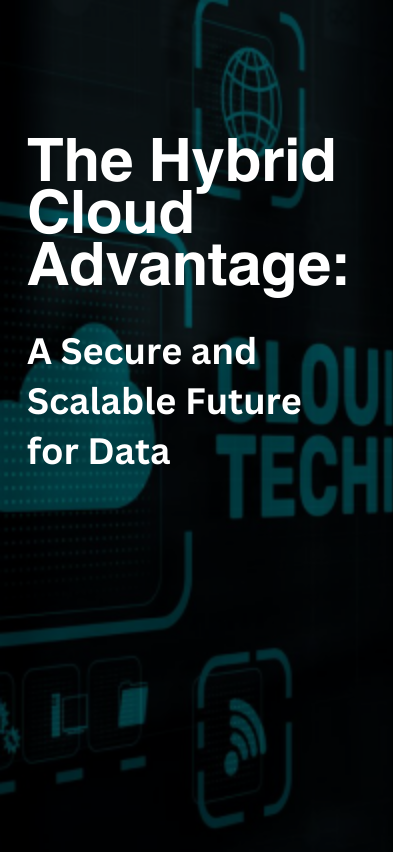

The hybrid cloud offers a powerful solution by combining the best of both worlds: the security and control of a private cloud with the scalability and flexibility of a public cloud. With this hybrid approach, businesses can take advantage of on-demand resources, easily expand their infrastructure, and ensure the highest level of data security.
But leveraging the power of the hybrid cloud comes with its own set of challenges. How do you ensure that your data is protected and compliant? How do you seamlessly integrate your existing on-premises infrastructure with the cloud? And how do you achieve optimal performance and cost-efficiency?
In this article, we will dive into the world of hybrid cloud, exploring its benefits, challenges, and best practices for securing and scaling your data for the future. Whether you are a small business or a large enterprise, unlocking the potential of the hybrid cloud is essential in today’s data-driven world.
The hybrid cloud offers numerous benefits that make it an attractive option for businesses of all sizes. Firstly, it provides the flexibility to scale resources up or down as needed. With a hybrid cloud infrastructure, businesses can easily handle peak workloads by leveraging the resources of a public cloud provider, while still maintaining important data and applications in a private cloud environment. This allows for cost savings as businesses only pay for the resources they actually use.
Secondly, the hybrid cloud offers improved data security. By keeping sensitive data and critical applications in a private cloud, businesses can ensure that they have full control over their data and can implement their own security measures. On the other hand, non-sensitive data and non-critical applications can be stored in the public cloud, taking advantage of the security measures provided by the cloud provider.
Additionally, the hybrid cloud enables businesses to achieve better performance and reduce latency. By distributing workloads across both private and public cloud environments, businesses can ensure that applications are running on the most suitable infrastructure, resulting in improved response times and user experience.
Creative:
- Data Segregation: Hybrid clouds enable organizations to store sensitive data in private clouds, while less sensitive data can be stored in public clouds, ensuring better security and compliance with regulations.
- Reduced Attack Surface: By distributing data across multiple clouds, organizations can reduce the risk of a single point of failure and minimize the impact of a potential attack.
- Improved Compliance: Hybrid clouds help organizations navigate international data governance by allowing them to store data in compliance with specific regulations like CCPA and GDPR.
- Cloud Bursting: Hybrid clouds enable organizations to scale their operations on an as-needed basis, avoiding the need for expensive capital expenditures and reducing IT spending.
- Increased Resource Accessibility: Hybrid clouds provide organizations with the flexibility to access resources from anywhere, ensuring that employees can work efficiently regardless of their location.
- Lower IT Spending: Hybrid clouds help organizations reduce their IT spending by leveraging public cloud resources for less critical workloads, freeing up resources for more strategic initiatives.
- Shift from Capital to Operational Expenditures: Hybrid clouds enable organizations to shift from capital expenditures for infrastructure to operational expenditures for cloud services, reducing upfront costs.
- Portable Applications: Hybrid clouds allow organizations to develop portable applications that can run on either private or public cloud infrastructure, ensuring business continuity during outages.
- Improved Disaster Recovery: Hybrid clouds enable organizations to develop disaster recovery strategies that can quickly recover from service outages, minimizing downtime and its impact on customer experience.
- Enhanced Data Security: Hybrid clouds provide organizations with the ability to manage their security risk by storing sensitive data in private clouds and less sensitive data in public clouds.
- Unified Security Management: Hybrid clouds enable organizations to manage their security policies, permissions, and more from a single pane of glass, simplifying security management
- Access to Cutting-Edge Tools and Technologies: Hybrid clouds provide organizations with access to the latest cloud technologies and tools, driving innovation and competitiveness
While the benefits of hybrid cloud are enticing, there are also challenges that businesses need to overcome when implementing and managing a hybrid cloud environment. One of the main challenges is ensuring the security and compliance of data. With data being stored in both private and public clouds, businesses need to implement robust security measures to protect sensitive information. This includes encryption, access controls, and regular security audits.
Another challenge is the integration of existing on-premises infrastructure with the cloud. Businesses often have legacy systems and applications that need to be integrated with the hybrid cloud environment. This requires careful planning and execution to ensure a seamless and efficient integration process.
Furthermore, managing and monitoring a hybrid cloud environment can be complex. Businesses need to have the right tools and processes in place to effectively manage the different components of their hybrid infrastructure. This includes monitoring performance, optimizing resource allocation, and ensuring high availability.
Securing a hybrid cloud environment is of utmost importance to protect sensitive data and maintain compliance with industry regulations. There are several best practices that businesses can follow to ensure the security of their hybrid cloud environment.
Firstly, businesses should implement strong access controls and authentication mechanisms to prevent unauthorized access to their data and applications. This includes using multi-factor authentication, strong passwords, and role-based access controls.
Secondly, businesses should encrypt their data both at rest and in transit. Encryption ensures that even if data is intercepted or stolen, it remains unreadable without the proper decryption key. This adds an extra layer of security to protect sensitive information.
Thirdly, businesses should regularly monitor their hybrid cloud environment for any suspicious activities or vulnerabilities. This includes implementing intrusion detection systems, conducting regular security audits, and staying up to date with the latest security patches and updates.
Lastly, businesses should have a disaster recovery plan in place to ensure business continuity in the event of a security breach or system failure. This includes regular backups of data, redundant systems, and a clear plan for recovering and restoring operations.
Securing a hybrid cloud environment is of utmost importance to protect sensitive data and maintain compliance with industry regulations. There are several best practices that businesses can follow to ensure the security of their hybrid cloud environment.
Firstly, businesses should implement strong access controls and authentication mechanisms to prevent unauthorized access to their data and applications. This includes using multi-factor authentication, strong passwords, and role-based access controls.
Secondly, businesses should encrypt their data both at rest and in transit. Encryption ensures that even if data is intercepted or stolen, it remains unreadable without the proper decryption key. This adds an extra layer of security to protect sensitive information.
Thirdly, businesses should regularly monitor their hybrid cloud environment for any suspicious activities or vulnerabilities. This includes implementing intrusion detection systems, conducting regular security audits, and staying up to date with the latest security patches and updates.
Lastly, businesses should have a disaster recovery plan in place to ensure business continuity in the event of a security breach or system failure. This includes regular backups of data, redundant systems, and a clear plan for recovering and restoring operations.
